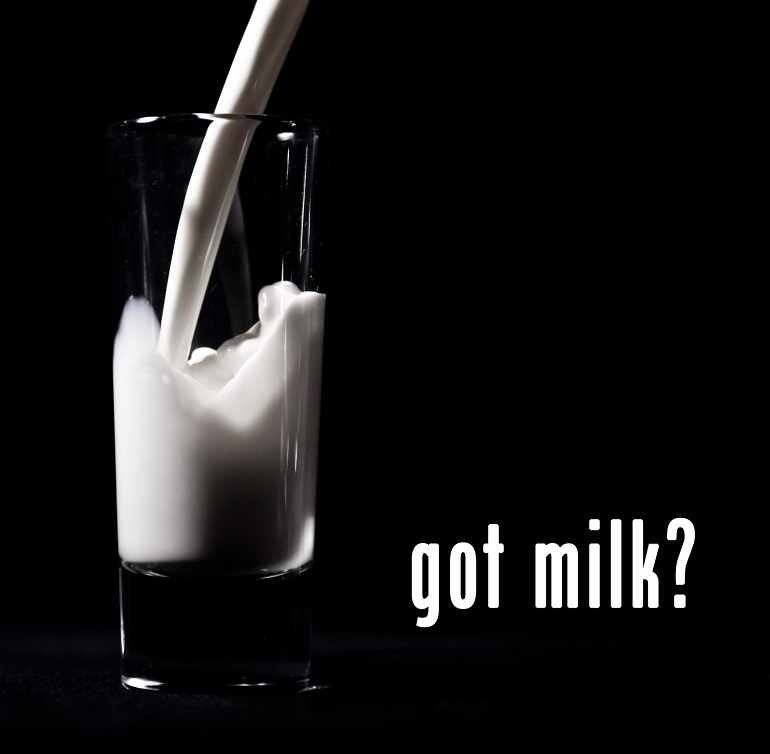Come with me, if you will, on a trip down memory lane to your elementary school cafeteria.
For those of you who are products of our country’s wonderful public school system, try to remember the smell of cheap disinfectant used on the checkered tiled floor. Imagine the rows upon rows of fold-out tables assembled to fit as many kids as possible on their faux wood benches.
Now picture the assembly line doling out pre-packaged “food product” fresh out of the microwave on to your plastic tray. After selecting your colorful meat and starch products of the day, you come to the most important decision of the school lunch experience: chocolate, strawberry or regular?
Of course, I’m talking about one’s selection of milk.

Photo courtesy of @pixagraphic on flickr.com
If you were raised on American public school lunches, you’d be quite familiar with the “Got Milk?” campaign. You know what I’m talking about — the pictures of various celebrities shown in peak physical health accented with the iconic white mustache plastered throughout school hallways and cafeterias. These figures were presented to children as examples of what they could eventually become if they stuck with the USDA’s guidelines of two to three servings of dairy per day.
But what if I told you that it wasn’t true? That all the talk about having to rely on milk for developing strong bones and preventing osteoporosis was just a heavily subsidized industry’s marketing campaign? If anything, milk and dairy products do more harm than good to the average American. Ask any vegan, and they’ll tell you that there are many other options besides milk through which you can get more than enough calcium and other nutrients to keep deficiency at bay.

Photo courtesy of @mc559 on flickr.com
If there are so many other alternatives to milk’s nutrients in a well-rounded diet, then why were we raised to believe so strongly in its importance? The answer is a little complicated, but let’s start with the history.
The dairy industry in America has always been a big player in domestic agricultural practices since World War I when milk production was increased exponentially to provide the military overseas with a reliable source of nutrition. However, when the war ended and the market for dairy products died down, American farmers were left with an overwhelming surplus of — you guessed it — milk.
Though the government did what it could to buy and distribute it abroad as emergency aid and sell it to foreign countries, there was just too much excess to be worth the expenses. So, they stopped buying it up.
And, of course, dairy producers were not happy with that. In order to keep dairy sales up, they struck a deal with Congress to create USDA-sponsored PSAs promoting milk to the public. Cue the “Got Milk?” propaganda.
The industry’s influence doesn’t stop at creating TV spots and magazine ads. Another major element in this multi-million dollar business is politics. When I mean politics, I’m talking about lobbying. Numerous members of Congress collectively receive more than $1 million from the dairy industry to keep their products ingrained in the federal nutrition guidelines each time a review comes around.

Photo courtesy of Cathy on flickr.com
Now that you know about what really goes on behind the scenes, how do you feel about the white fluid that has been praised as a cornerstone to a healthy diet? I, for one, don’t have the restraint to boycott the allure of butter, ice cream, or other satisfying dairy products. But straight up, unadulterated, milk? Nah.


